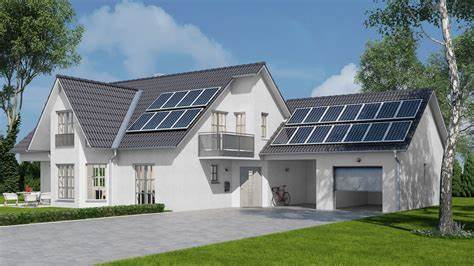With energy prices on the rise, renewable energy and going off-grid are smart investments for the future. Solar energy, in particular, is flourishing, with solar panels already installed on over 1.7 million rooftops across Australia. It is indeed a loved choice for landlord solar as this not just is a form of sustainable energy but considerably cuts down on the expenses.
Solar energy systems provide a wide range of advantages for your house or business, including a sustainable, 100 percent renewable energy supply and, most significantly, free energy.
But let’s put the practical truths aside for a while and talk about some interesting solar facts. So, here are five fascinating solar energy facts to help you see the light!
Solar energy is almost 200 years old
As much as the demand for solar for tenant is on the rise now, it has been there for centuries!
Alexandre Edmond Becquerel in 1839 discovered the concept of solar energy after he found the ‘photovoltaic effect’ of electricity generation from direct sunlight. The usage and applications became more sophisticated with the invention of transistors in 1941 by Russell Ohl who also created solar cells.
Solar panels are now found on houses and small enterprises all over the world, giving safe, renewable energy from cities to the most distant indigenous tribes.
NASA has been using solar energy since the 1950s
Yes, the space sector was among the early consumers of solar technology. When you think about it, it sounds logical, but NASA has been using solar technology for a long time, even using it aboard the Vanguard 1 satellite. It’s the world’s oldest satellite, with 6 silicon solar cells that generate around 1 watt of energy and a size that fits in the palm of your hand. It was sent into orbit in 1958. It sent radio signals back to Earth using the electrical power provided by the solar cells. It lasted 6 years before it went silent! Solar panels are now used by NASA for a variety of applications.
China has the world’s largest solar cell
Although many companies are competing against the world’s largest solar farm, the ‘Great Wall of Solar’ is in Tengger Desert Solar Park, Ningxia, China. Mongolia’s desert comprises 36,700 km, whereas the solar farm covers 1,200 km. It was built in 2017 and is owned by China’s National Grid. It is huge, capable of supplying 600,000 homes with safe, renewable electricity. The Tengger facility’s completion pushed China’s installed solar capacity above 176 gigawatts. With over 32% of the global total, the country is by far the world’s leader in terms of installed capacity.
It is 100% safe and renewable
Solar energy is a renewable resource. The sun has been around for around 4 1/2 billion years and has burned through roughly half of the hydrogen in its core. Scientists estimate that the sun will continue to shine for another 5 billion years, giving us plenty of time to harness its energy.
Unlike nuclear energy or fossil fuels, the energy given by the sun and converted with a solar energy system is 100 percent clean; it emits no toxic waste bi-products, and residences with solar energy systems have the ability to become 100 percent self-sustaining. This can be extremely beneficial in terms of not only lowering your energy expenses, but also protecting your home or business from Australia’s never-ending blackouts.
Solar energy can be stored in salt
The Californian solar farm with a salt tower that can store 10 hours of electricity is one of the most useful forms of electricity management. Solar farms create a giant battery of sorts by storing solar energy in molten salt, which can be used when the sun isn’t shining.

